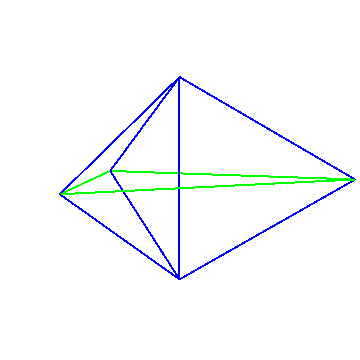A regular tetrahedron has this property:
For any two of its vertices exists a third vertex, which forms a regular triangle with these 2 vertices.(It doesn't necessarily have to be a face of it).
Are there any other polyhedrons that have the same property?
I think there isn't such a polyhedron. But not sure how to prove it. I've tried proving that there isn't an irregular tetrahedron with this property, assuming that there is a pair of unequal sides.
Current answers are a little confused with the conditions of the problem.

